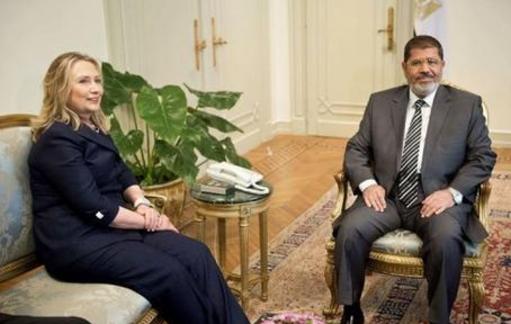The many large scale wars in Congo deserve a bigger place in the world’s eye. They range over vast distances and involve long running themes of vengeance and corruption. These wars drag in neighboring countries and involve important natural resources. By many accounts the Democratic Republic of the Congo has enough minerals to be one of the world’s largest countries – instead it is one of the utterly poorest.
I recommend reading Africa’s World War – Congo, The Rwandan Genocide, and the Making of a Continental Catastrophe By Gerard Prunier if you are interested at all in the topic.
In many ways the story of Congo could be conceptually linked to the causes of the first and second world wars in Europe and Asia. Grievances that were not resolved from one war carry over to the next, and fires smolder from generation to generation. The geographical facts on the ground also carry significant weight, and small armies or bands of rebels can overcome large, sprawling inefficient armies, even those supported by outside parties like the UN with air power.
The Fall of Goma and UN Peacekeepers
Congo is a vast country. On the far west in Kinshasa, the nation’s capital. On the far east, near the border with Rwanda, is Goma, their most important eastern city.
Even calling Congo one country is a misnomer. The capital city is the home of the president, the younger Kabila, who isn’t even very popular in the west (the most popular politician, Bemba, was charged with war crimes). A lot of Kabila’s support came from the east, where he successfully negotiated an end to the wars with Rwanda that had put the area in turmoil under depredations from local warlords. You can’t even really get across the country except by boat through winding rivers (where it is passable) and air travel is difficult or dangerous with the shambolic local carriers. The western part of the state and the capital have little capability to impact events on the ground in the west or exert state authority.
Events in the Congo often relate back to Rwanda and the genocide of 1994. After the genocide the Tutsis, under the effective leadership of the great jungle general Paul Kagame, took back Rwanda from the Hutus and launched a war with a small band of hardened fighters that took down the entire government of Congo and drew in multiple regional countries. The exploits of the small number of Rwandan fighters need to go down in history as the story of a relatively tiny and disciplined crew taking on an audacious war across a giant country. Regardless of their motivations and ethics from a military point of view they deserve high respect.
Now a band of ex-Congo soldiers who are mostly Tutsi and said to be supported by Rwanda and Uganda (two allies in the east who also clash over the looting of minerals through their rebel proxies), called M23 (after the date March 23 when the central government of Congo was said to have violated the terms of their entry into the Congo army as soldiers) have taken over the city of Goma right under the nose of the supposedly best equipped and trained units of the Congolese army, protected by attack helicopters and UN troops under the United Nations mission in DR Congo (MONUSCO).
From this article describing the UN peacekeepers role in Goma:
French foreign minister Laurent Fabius said it was “absurd” that the UN peacekeepers could not stop the rebels from entering Goma. With a 17,000-strong military and civilian staff, MONUSCO has a yearly budget of close to $1,5 billion and is the second-largest peacekeeping mission in the world.
On paper it seems astonishing that the tiny M23 band, which only takes up half a wikipedia page, can take on and win a major army with UN support and hold a city of over a million citizens in a supposedly hostile area. They only have a few thousand fighters, but it can be seen that they are effective and cohesive and were able to advance even though outgunned from the air. Obviously many are saying that they are simply Rwandan soldiers or heavily supported from Rwanda and Uganda but the truth cannot be verified. In any case it is clear that a small band of disciplined soldiers has made a mockery of Congo sovereignty in the east and the UN mandate.
At some point the illusion that eastern Congo is part of the west will likely die, and perhaps the time is now. People are pointing to the creation of South Sudan as a possible precedent, but it seems more like chaos than a civil war situation, and the local people aren’t exactly itching to be part of a larger Rwandan state.
It would be a giant mistake to under estimate the power and fearsomeness of these M23 rebels, especially if they are de-facto elements of the Rwandan military. Even a few of these soldiers have no problems taking on the demoralized (Congo army) or tactically limited (UN) soldiers. The world has trouble holding Rwanda accountable for their actions since the world basically sat on their hands and did nothing during the 1994 massacre. Like the Israelis, not only are the Rwandans extremely effective for their size in military terms, they have a cohesive identity tied to the genocide.
For the locals, sitting in an area of large mineral wealth that could be exploited to everyone’s’ benefit, being under the control of local warlords and in chaos is the likeliest situation in the short and medium term.
This confusing and long running story goes on, and perhaps only the final breakdown of Congo into a mass of tinier states will take us to the next step in this drama.
Cross posted at LITGM

